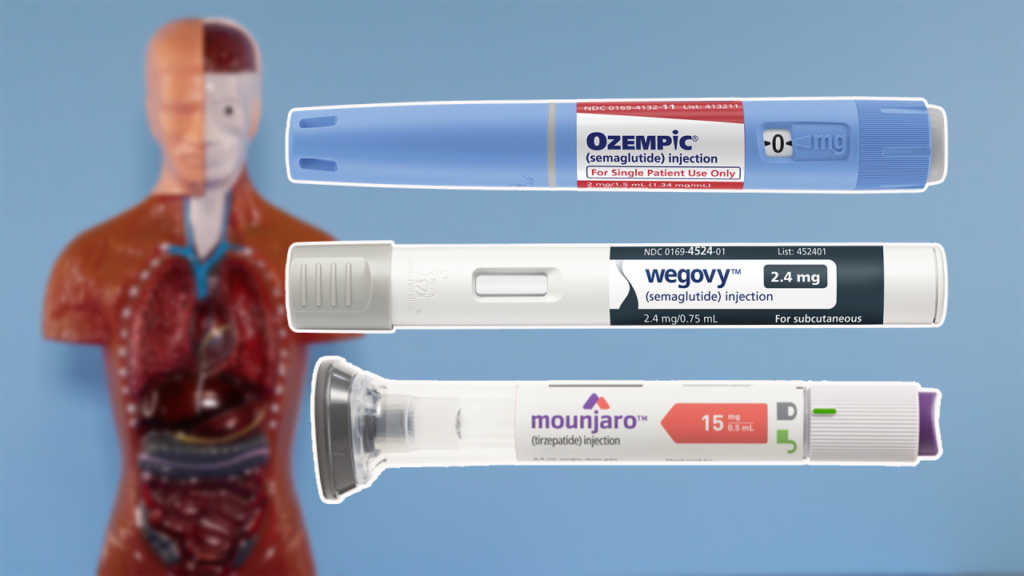From Diabetes Breakthrough to Obesity Powerhouse: GLP-1s agonists have revolutionized type 2 diabetes treatment, and now they’re poised to reshape healthcare again. But their impact is set to extend far beyond just blood sugar control.
This article explores the exciting potential of GLP-1 Drugs in tackling a range of obesity-related illnesses, promising a future where these drugs become cornerstones of a healthier world.
Tip: Please fill out the form if you or a friend would like more information on continuous glucose monitors.
Key Takeaways:
GLP-1s have transformed diabetes care, generating $23 billion in sales in 2022.
Their weight-loss capabilities open doors to treating obesity and its associated diseases, a market predicted to reach $77 billion by 2028.
Clinical trials are actively investigating GLP-1 Drugs for conditions like cardiovascular disease and liver disorders, with first approvals expected by 2025.
Must Read CGMs in noncritical care hospitals optimizes glycemic control
Unraveling the GLP-1 Drugs Story:
GLP-1, a naturally occurring hormone, stimulates insulin production and curbs hunger. Pharmaceutical companies have harnessed its power by developing GLP-1s, mimicking its effects. This has led to:
Revolutionary advancements in diabetes management: Drugs like Ozempic and Mounjaro have become household names, empowering patients with improved blood sugar control and significant weight loss.
Unlocking the path to obesity treatment: GLP-1 Drugs have proven remarkably effective in managing weight, rivaling surgical procedures like gastric bypass. Higher-dose versions like Wegovy and Zepbound have received FDA approval specifically for obesity, fueling a market expected to boom from $2.8 billion in 2022 to over $100 billion by 2030.
Read Guide about Wegovy Dosage Guide: The Best Way For Weight Loss
Targeting the Obesity-Related Epidemic:
The global obesity crisis isn’t just a weight problem; it’s a gateway to numerous devastating illnesses. As obesity rates soar, so does the prevalence of:
- Type 2 diabetes: Linked to 80-85% of T2D cases, a disease costing the U.S. healthcare system $380 billion annually.
- Cardiovascular disease (CVD): Obesity fuels up to 78% of hypertension cases, contributing to CVD’s $320 billion yearly burden in the U.S.
- Liver disorders: Up to 90% of obese individuals have non-alcoholic fatty liver disease (NAFLD), a precursor to the potentially life-threatening NASH. NAFLD alone generates $103 billion in annual costs in the U.S.
Also, read about 2024 ADA Standards of Care
GLP-1 Drugs: A Beacon of Hope for Complex Diseases:
With such staggering numbers, the need for effective solutions is more pressing than ever. This is where GLP-1s step in, offering a glimmer of hope:
54 active clinical trials are currently exploring the use of GLP-1 Drugs in various conditions beyond diabetes and obesity.
Encouraging results: Novo Nordisk’s Wegovy, for example, has shown a 20% reduction in heart attack, stroke, or death from heart disease in recent trials.
Case Study: Tackling the Liver Disease Challenge:
NAFLD and NASH, currently without approved treatments, affect millions. GLP-1 Drugs present a promising avenue for intervention:
Overlapping risk factors: Given the shared risk factors between diabetes and liver disease, the diabetic drug Ozempic is projected to become the second-highest-grossing treatment for NAFLD and NASH by 2028.
Filling the gap: The potential for GLP-1s in liver disease highlights their ability to address unmet medical needs, offering hope to millions suffering from debilitating conditions.
Conclusion: A Future Powered by GLP-1s:
The demand for GLP-1s is skyrocketing, driven by their proven effectiveness and expanding applications. Pharmaceutical giants like Lilly and Novo Nordisk are ramping up production to meet this demand, investing billions in capacity expansion.
Beyond established players, new entrants are joining the race. Roche’s acquisition of Carmot Therapeutics and AstraZeneca’s deal with Eccogene for a GLP-1 Drugs pill demonstrate the growing confidence in this transformative class of drugs.
Looking ahead, the future of GLP-1s is brimming with possibilities. As supply catches up with demand and approvals widen their reach to new disease areas, these remarkable drugs stand poised to reshape healthcare, delivering a healthier future for individuals struggling with obesity and its devastating consequences.


